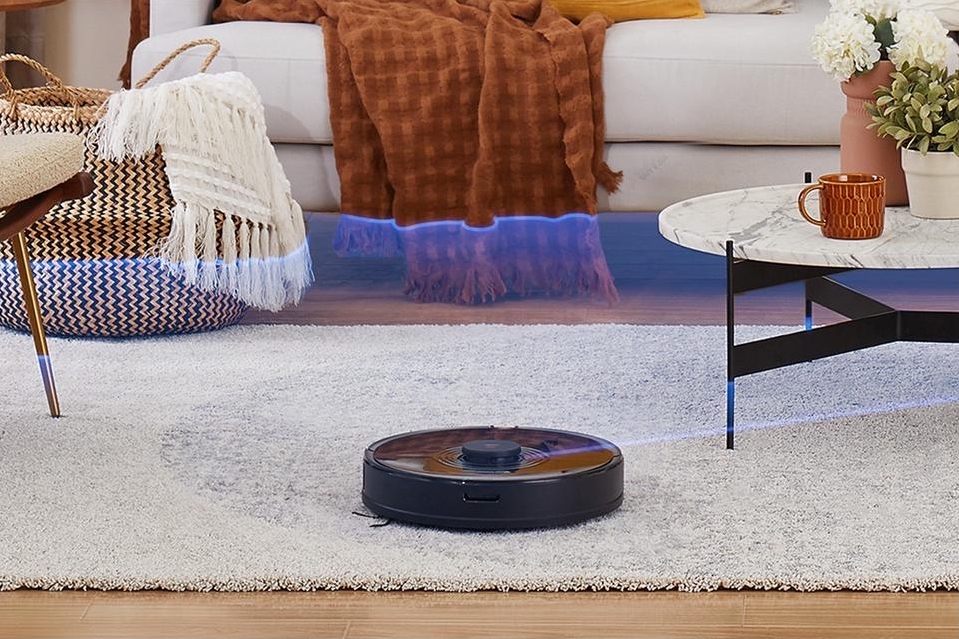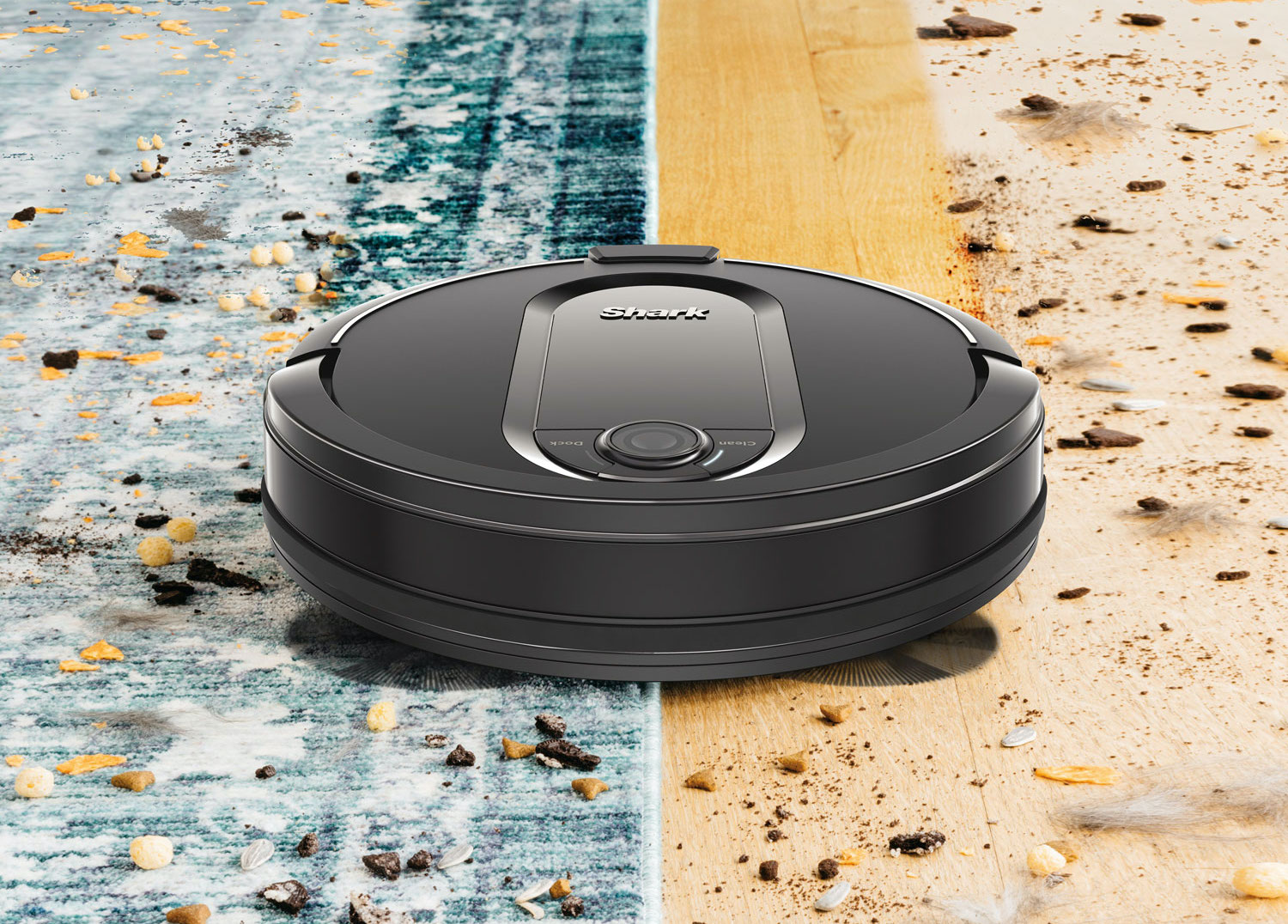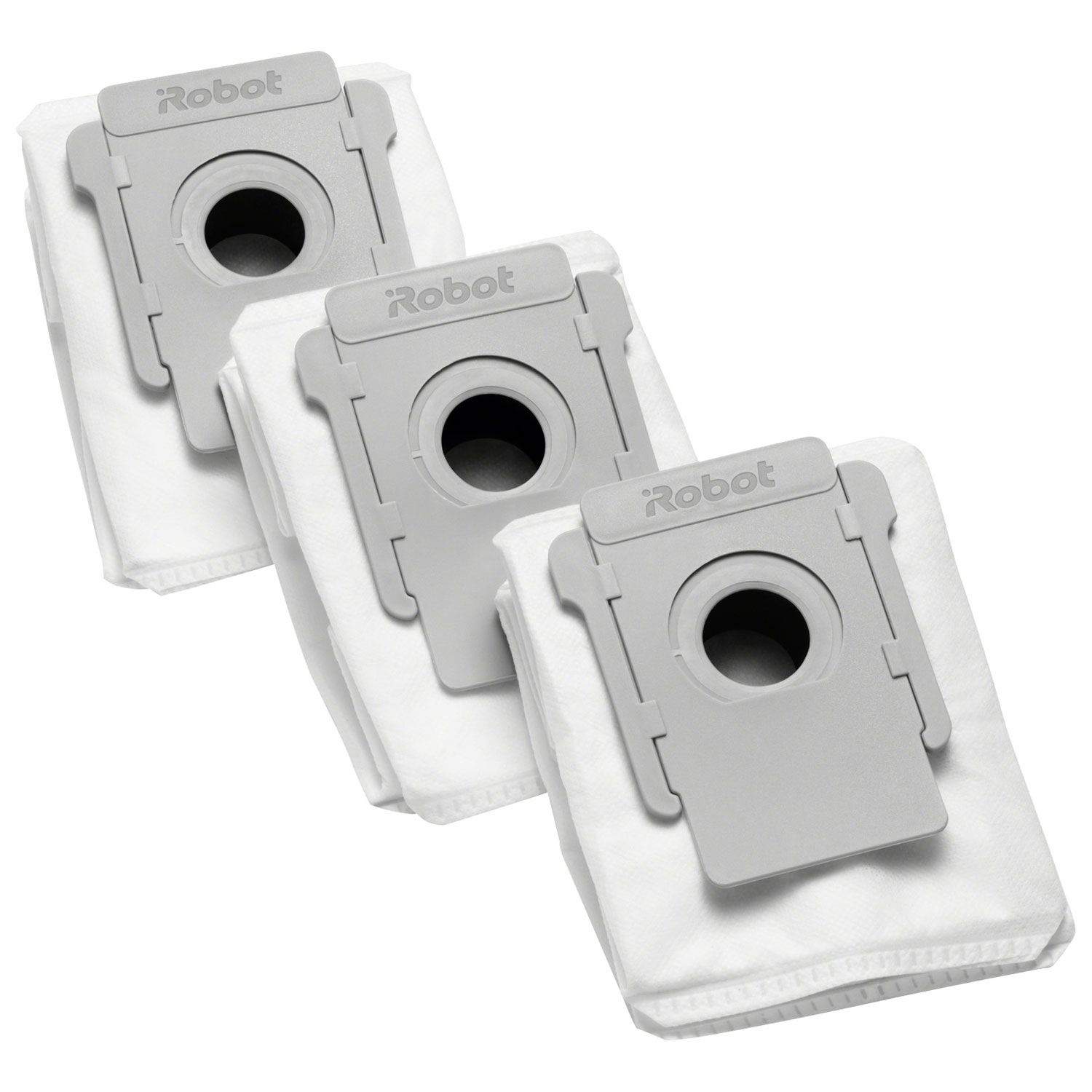
If you could take one chore off of your weekly to-do list for good, would you do it? That’s what a robot vacuum offers you: the ability to take vacuuming off your regular to-do list on a permanent basis.
With a robot vacuum, your vacuum will clean your home without you. That’s 20; 40; maybe even 60 minutes that you’ll get back every time your vacuum runs. All those extra minutes will give you more time for the things you enjoy, like reading a good book or playing tag with your kids. Thanks to the hands-off approach of a robot cleaning devices, you may even find that you can clean more frequently with robot vacuum — so your floors will get cleaner than ever while your chore load decreases. (The dream!)
Table of contents
- What is a robot vacuum?
- How robot vacuums navigate your home
- What to look for in a robot vacuum
- Different categories of robot cleaners
- How to care for your robot vacuum

What is a robot vacuum?
Robot vacuums are small, self-propelling vacuums that roam your hard floors and carpets looking for dust bunnies to suck up. They clean your floors without you having to lift a finger and use sensor-based navigation to move from area to area. When a robot vacuum is full, needs to recharge, or finishes its cleaning cycle, it returns to a home charging base.
How does a robot vacuum differ from other types of vacuums?
Unlike other home vacuums, robot vacuums operate largely autonomously. They’re cordless devices with rechargeable batteries, and they have the ability to clean your floors on their own. You can typically press a button on the vacuum to set it to turn on, but many also work with a paired mobile app.
Robot vacuums offer more suction now than ever before, with some brands’ robotic vacuums coming equipped with over 10 000 Pa of suction pressure. However, what they’re most favoured for is not their suction power, but their ability to clean your home on their own. Some models operate a simple routine at the touch of a button, while others can be scheduled to clean your home while you’re asleep or away. With a pre-scheduled robot vacuum, you can wake up or come home to clean floors every day without having to commit the time or energy to manually vacuum.
Can you own a robot vacuum without another home vacuum?
For most households, a robot vacuum is an accessory purchased for its convenience. They stay flat on the ground and are excellent for daily maintenance and routine cleans. They’re a great choice for homes with smooth flooring (think hardwood, tile, and laminate) and do well in homes with low-pile carpet and rugs, too.
Many robot vacuum users rely on these independent cleaners to bear the grunt of their floor cleaning needs. However, it’s common for users to have a separate, handheld vacuum for their more detailed cleaning tasks, like vacuuming their drapes or upholstery.
How robot vacuums navigate your home
Robot vacuums use a variety of different technologies to navigate your home. In general, most these technologies can be separated into two categories: those that use lasers and those that use cameras.
Vacuums that use LiDAR (Light Detection and Ranging) use laser-based navigation map your home through distance and data points. SLAM (Simultaneous Localization and Mapping) vacuums use cameras generate a map by identifying visual landmarks like furniture or walls. Both technologies are very effective. Each individual vacuum’s performance will rely on its navigation hardware and software, but some consumers find that LiDAR is quicker while SLAM offers the opportunity for companies to develop intelligent object avoidance.
Whether you prefer camera- or laser-based navigation is a personal choice. Both work well to create a map of your home, and LiDar and SLAM navigation will keep your vacuum from falling from ledges or staircases. Other navigation technologies you might see in a robot vacuum’s description include bump-and-run technology and IN (Inertial Navigation), which are older technologies that run a little more slowly at an affordable price tag.
Smart vacuum features for a convenient clean
If you’re looking for a cutting-edge navigational system, make sure to check out Best Buy’s robot vacuums with obstacle avoidance technology and smart mapping.
Obstacle avoidance is an awesome feature for busy homes. It uses either LiDAR or SLAM technology to avoid objects such as cords, shoes, and pet waste. For families and households where a vacuum is likely to run entirely independently (for instance, when everyone is asleep, at school, or at work), obstacle avoidance can be especially handy as there’ll be no one around to reposition a vacuum that gets stuck on an object.
Smart mapping is another handy tool to look for in a robot vacuum. This is a feature that users will mostly experience through your vacuum’s app, and it can save a ton of time. With a smart map, you can set zones where your vacuum should and shouldn’t clean, and section off different areas of your home as different rooms. When it comes to schedule or run your vacuum, you can prioritize the areas that you want cleaned: for instance, using your vacuum’s app to schedule a daily cleaning of the kitchen floors and a weekly cleaning of the bedroom floors.
How to find a navigation system you love
Despite looking similar, unique models of robot vacuums can be designed very differently. From their suction power to their parts and software, the experience of using one robot cleaner versus another is as different as using one manual vacuum versus another.
If you’re replacing an older model of robot vacuum that you loved using, try upgrading within the same brand. Software and navigational systems are often similar within brands and product ranges. Sticking to a well-loved brand is an easy way to ensure you’ll enjoy your new vacuum even more than your last one. You’ll also be able to leverage your knowledge the app you already downloaded and have become familiar with.
If you’re looking to try a new robot vacuum but you haven’t loved your experiences with others in the past, try switching from a model with camera-based navigation to one with laser-based navigation or vice-versa. It could be the change you need to find the perfect fit!
Top-selling brands like iRobot and Dyson use camera-based SLAM mapping technologies, while the popular Roborock, Shark, Ecovacs, and Dreame largely use laser-based LiDAR.
Specifications to look for in every robot vacuum
Every robot vacuum comes with information on its product specifications, including battery size and suction power. Check out Best Buy’s “More Information” and “Details & Specs” sections on each product page to learn more about a vacuum’s suction power (measured in Pascals), run time, and waste bin size. These product specs will influence how powerful your vacuum will be and how often it’ll need manual emptying.
When selecting a robot cleaner, be sure to also check for other features like app-based scheduling, voice control, stored home maps, and suction variability so you know what to expect when it arrives.
Your first robot vacuum checklist:
- Does this vacuum have the suction power (Pa) I need for my home?
- How often will I need to empty this vacuum?
- Does the battery life offered in this vacuum suit the size of my home?
- Does this model of vacuum offer voice assistant control through services like Alexa or Siri?
- Can this vacuum fit underneath my furniture, including chairs, buffets, and bed frames?
- Do I have a spot where I can dock my vacuum with sufficient space around it?
- Which special features, such as smart mapping, scheduling, self-emptying, or object avoidance, would I like my vacuum to have?
Specialized robot vacuum features
Robot vacuums are now more robust and powerful than ever before, and they can offer some very handy features on top of basic vacuuming. Find out more about each feature to discover which ones are must-haves for your home.
Artificial Intelligence
Many robot vacuums are now using AI to refine the vacuum’s suction, navigation, and schedule. Think of vacuum AI as a piece of software that adds a little “something extra” to the hardware of an already great device. AI can help your vacuum suggest when to clean your home and which settings to use for each room, as well as fine-tune your vacuum’s object avoidance for precision cleaning.
Multi-mapping
One popular feature to look for is multi-mapping capabilities. A robot vacuum’s longest cleaning session tends to be its first one, as it needs to spend extra time carefully mapping each new space. If you live in a larger home with multiple floors, multi-floor map storage can be incredibly handy as you’ll never have to re-map. Your cleaning sessions will be quicker and easier than ever before, without the need for multiple robot vacuums.
Smart mapping
Another helpful deluxe robot vacuum feature is smart mapping. Smart maps allow the user to label each room in their in-app home map. With smart maps, you can send your vacuum to clean specific rooms or areas as needed. Paired with in-app scheduling, you can even send your robot to clean only specific areas at specific times.
Smart mapping is great for families who need certain areas (like playrooms, dining rooms, and entryways) vacuumed more often than others. It’s also great for sending your robot cleaner out for spot cleaning while your hands are full.
Smart object identification/avoidance
Smart object identification and avoidance is a camera-based technology. Vacuums with object recognition technology use a camera (or LiDAR navigation with additional camera support) to identify and avoid common objects in the home. This can include pet waste, cords, slippers, socks, and more.
With smart object identification, your robot vacuum will require less human intervention during a cleaning cycle. You’re also less likely to need to pre-clean before turning your vacuum on if it has smart object identification capabilities. Object identification can be found in vacuum models from brands including iRobot, Roborock, Shark, and Ecovacs.
Spot cleaning
Many models of robot vacuums offer spot cleaning (with or without app control) to help you target messy areas.
Spot cleaning is an especially helpful feature for households that don’t have or don’t often use a manual vacuum. It allows you to target a specific mess without vacuuming your whole home, saving both time and energy.
Other robot cleaning features
Other features that you might enjoy from your robot vacuum include invisible barriers and no-go zones, quiet mode vacuuming, voice control, cleaning time estimates, and HEPA filtration. Look at each product’s detailed description to find out more about what each model offers.
Different categories of robot cleaners
“Robot vacuums” is a term that’s often used to describe all robotic floor cleaners, but these little robots can do much more than just vacuum.
Dry robot vacuums
Look for products described as “robot vacuums” for hands-free cleaning on dry flooring. These vacuums are a great way to enjoy the luxury of having something else do your cleaning for you with the convenience of setting your own schedule.
Self-emptying robot vacuums
Opt for a self-emptying robot vacuum for hands-free cleaning with even less maintenance. This fast-growing category of vacuums return to their base whenever their dustbin is full. There, they empty their contents into a larger receptacle using a vacuum system built into the self-emptying base.
With a self-emptying robot cleaner for dry floors, you can conveniently empty a large vacuum bag every month or so (depending on frequency of use) instead of after every session.
Self-emptying designs are excellent for large homes in which a single-bin robot vacuum may not be able to finish cleaning without being emptied partway through. They’re also great for homes with carpet, which tend to collect more dust and debris. You can identify a self-emptying vacuum model by looking for terms like “self-emptying” and “plus” in the product name and description.
Robot mops
For even cleaner floors, switch to a robot mop (or mop and vacuum combination) to try a different type of robot cleaner. These cleaning robots are great for homes with a lot of hard floors. They work well on smooth flooring materials like tile, vinyl plank, hardwood, and stone and can handle both dry and we messes.
Some robot cleaner brands offer a dedicated robot mop that pairs with a matching vacuum. Others integrate their robot vacuum and mop into one appliance. These different options give each household the opportunity to find the robot cleaner that’s right for them. With a wide array of choices, you can customize your cleaning experience to match your space and lifestyle perfectly.
How to care for your robot vacuum
Like with any other vacuum, proper care and maintenance of your robot vacuum will help you keep your appliance in tip-top shape for as long as possible. Luckily, maintenance is easier than ever with in-app tips and reminders.
Your robot vacuum will require you to empty its dustbin on a regular basis — after every cleaning session for models without a self-emptying base, or once a month for models with one. In addition to basic maintenance, you can help keep your vacuum performing like it’s brand new by cleaning its filters regularly, detangling hair and threads caught on its brush roll often, and replacing vacuum cleaner parts as recommended by the brand. Robot vacuums are estimated to last for 4-8 years based on battery quality and price point, but regular maintenance and parts replacement can help them last for longer (and perform better during that time).
Who can benefit the most from a robot vacuum?
Robot cleaning devices are especially great for busy families and young professionals. They offer two primary benefits:
- They can make vacuuming and mopping hands-free tasks.
- Because those tasks become hands-free, you can significantly increase their frequency.
When it comes to vacuuming and mopping, frequency can be just as important as (if not more important than) intensity. Tidy floors become standard with a robotic cleaning schedule, even if you have kids or pet in the home and you don’t have a lot of time to clean.
This is especially important for households with asthma, allergies, and shedding pets. Daily or frequent cleaning significantly cuts down the amount of allergens in the home. With a robot cleaner, you can remove dust and dander from your floors before they can accumulate. Then, if you need more specialized care, you can add on a manual deep clean whenever you have the time and energy for it.
Robot cleaning devices are incredibly helpful for households of all types. They can become everyday essentials for families running on a tight schedule and also make great gifts for young adults moving into their first home. Robot cleaners, especially those with a self-emptying base, can also be beneficial for some individuals living with physical or cognitive limitations. By reducing the mental and physical cleaning load of daily life, they can make living independently a little easier for the elderly, chronically ill, executively impaired, and more. Keep reading about robot vacuums in this post and learn how to choose the right one for yourself.
Take the next step
Robot vacuums take a stressful household chore off your plate so you can spend more time enjoying what you love. When you’re ready to take the next step, check out some robot vacuum reviews on the Best Buy blog and explore robot vacuums online to find the perfect one for your home.














